พระสมเด็จจิตรลดา, พระกำลังแผ่นดิน พระพิมพ์ฝีพระหัตถ์ขององค์ประมุขของชาติ
ในช่วงเวลาก่อนที่จะทรงมีพระราชดำริ ให้สร้างพระพุทธนวราชบพิตร ในราวปีพุทธศักราช 2508 พระบาทสมเด็จพระเจ้าอยู่หัวภูมิพลอดุลยเดชฯ ได้ทรงพระมหากรุณาโปรดเกล้าฯ ให้นายไพฑรูย์ เมืองสมบูรณ์ ข้าราชการกองหัตถ์ศิลป์ กรมศิลปากรเข้ามาเป็นผู้แกะแม่พิมพ์ พระพุทธรูปพิมพ์นี้ในพระราชฐาน ณ พระตำหนักจิตรลดารโหฐาน และได้ทรงตรวจพระพุทธศิลป์ฯ ของพระพุทธรูปพิมพ์องค์นี้อย่างใกล้ชิด เพื่อให้ได้พุทธศิลป์ที่สมบูรณ์จนเป็นที่พอพระราชหฤทัย พระพุทธรูปพิมพ์ที่แกะถวายนั้นเป็นพระพุทธรูปพิมพ์ปางนั่งสมาธิแบบขัดราบ พระบาทขวาทับพระบาทซ้าย ประทับเหนือดอกบัวบาน บน 5 กลีบ ล่าง 4 กลีบ ตรงกับรัชกาลที่ 9 รูปทรงสามเหลี่ยมหน้าจั่ว ขนาดกว้าง 2 ซม. สูง 3 ซม. ส่วนพระพิมพ์องค์เล็กขนาดกว้าง 1.2 ซม. สูง 1.9 ซม. ทรงมีพระกระแสรับสั่งให้แกะแม่พิมพ์เพิ่มอีกภายหลังจากนั้นไม่มากนัก เพื่อพระราชประสงค์ในการพระราชทานให้แก่เด็กๆพระองค์ได้ทรงสร้างขึ้นด้วยพระหัตถ์ของพระองค์เองทั้งสิ้น ตั้งแต่การถอดแบบแม่พิมพ์ ทรงผสมมวลสาร ทรงเทลงแม่พิมพ์ ทรงตกแต่งองค์พระพิมพ์เพื่อให้ดูงดงามทั้งหมดนี้ โดยทรงใช้เวลาหลังจากพระอักษร และทรงงานอันเป็นพระราชภารกิจในตอนดึก ประกอบด้วยผงมงคลศักดิ์สิทธิ์ต่างๆ ทั้งส่วนในพระองค์และวัตถุมงคลศักดิ์สิทธิ์จากทุกจังหวัด ที่พุทธศาสนิกชนทั่วพระราชอาณาจักรปฏิบัติบูชาสืบเนื่องกันมาเป็นเวลาช้านาน
พระราชประสงค์ ในการสร้างพระพุทธรูปพิมพ์นี้
ถวายพวงมาลัยดอกไม้สดจากประชาชนในการเสด็จพระราชดำเนิน เปลี่ยนเครื่องทรงพระพุทธปฏิมากรแก้วมรกต และได้ทรงแขวนไว้ ณ ที่บูชาองค์พระพุทธรูปปฏิมากรตลอดเทศกาล จนถึงคราวที่เสด็จพระราชดำเนินเปลี่ยนเครื่องทรงใหม่ ทรงเห็นเป็นสำคัญที่ควรเก็บดอกไม้แห้งเหล่านี้ไว้ให้เป็นประโยชน์ เพื่อเป็นสิริมงคล ประโยชน์ที่จะใช้ทรงมีพระราชวินิจฉัยว่า สมควรใช้เป็นส่วนผสมสำหรับสร้างเป็นพระพุทธรูปพิมพ์ โดยมีพระราชประสงค์เป็นเบื้องต้น เพื่อจะบรรจุที่ฐานบัวหงายขององค์พระพุทธนวราชบพิตร และพระราชทานแก่ข้าราชบริพารฝ่ายในที่ถวายงานใกล้ชิดเบื้องพระยุคลบาท รวมทั้งราชองค์รักษ์ประจำเท่านั้น
เพื่อให้ได้พุทธคุณ เพียงเฉพาะดอกไม้แห้งจากพวงมาลัยดังกล่าว คงไม่พอเพียงที่จะทำเป็นองค์พระได้ จะต้องมีส่วนผสมที่ประสานให้เป็นเนื้อเดียวกันและทรงเทพิมพ์ได้สวยงาม รวมทั้งวัตถุมงคล จากสิ่งศักดิ์สิทธิ์ทั่วพระราชอาณาจักรด้วย จึงจะได้อำนาจแห่งพระพุทธคุณโดยสมบูรณ์ จึงทรงให้เจ้าพนักงานรวบรวมเส้นพระเจ้า (เส้นพระเกศา) หลังจากทรงเครื่องใหญ่ (ตัดผม) ดอกไม้แห้งจากมาลัยที่แขวนพระมหาเศวตฉัตร และด้ามพระขรรค์ชัยศรี ในพระราชพิธีฉัตรมงคล สีซึ่งขูดจากผ้าใบที่ทรงเขียนภาพฝีพระหัตถ์ ชัน และ สีซึ่งทรงขูดจากเรือใบพระที่นั่งขณะที่ทรงตกแต่งเรือใบพระที่นั่ง ส่วนผสมอันเป็นมงคลที่เรียกว่า ส่วนในพระองค์
ส่วนที่มาจากจังหวัดต่างๆ อันเป็นวัตถุมงคลที่ได้มาจากปูชนียสถาน หรือพระพุทธรูปอันศักดิ์สิทธิ์ที่ประชาชนเคารพบูชาในแต่ละจังหวัดอันได้แก่ ดิน หรือ ตะไคร่น้ำจากปูชนียสถาน เปลวทองคำ ปิดพระพุทธรูป ผงธูปหน้าที่บูชาและน้ำจากบ่อศักดิ์สิทธิ์ ซึ่งได้เคยนำมาใช้เป็นน้ำสรงบูรธาภิเษก ในพระราชพิธีบรมราชาภิเษก





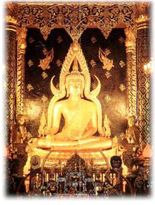
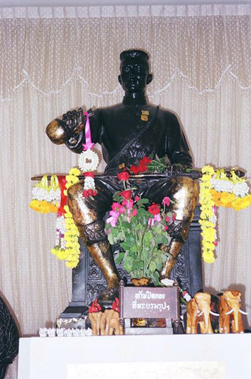
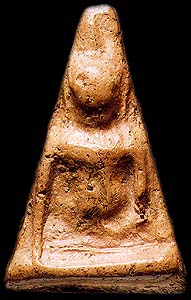
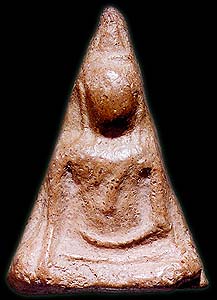
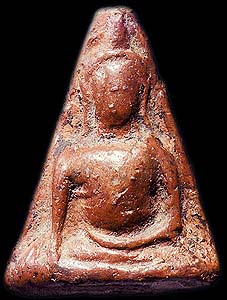
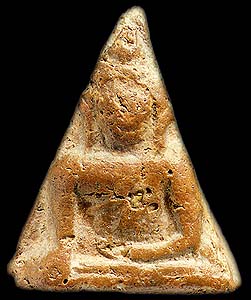
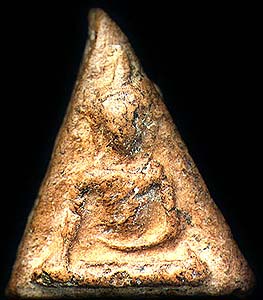
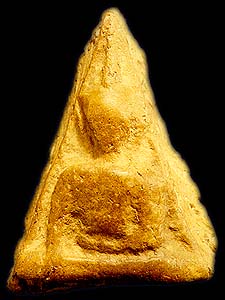
No comments:
Post a Comment